
This resource includes tasks aligned to 4.MD.6.
- Subject:
- Mathematics
- Material Type:
- Activity/Lab
- Formative Assessment
- Author:
- Drew Polly
- Date Added:
- 07/25/2020

This resource includes tasks aligned to 4.MD.6.
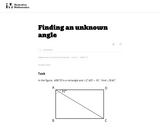
In this task, students solve a problem with an unknown quantity.

In this lesson students will design and build a simple bendy straw launcher. Students will then test how far their rocket will fly when launched from different angles. After recording their data students will use the data to make a claim about which angle is the best for launching their rocket.

This parent guide supports parents in helping their child at home with the 4th grade Math content. Within the folder you will access Parent Guide PDFs in FIVE Languages: Arabic, English, Hindi, Spanish, and Vietnamese to help on-going communication with caregivers.

This resource accompanies our Rethink 4th Grade Math course. It includes ideas for use, ways to support exceptional children, ways to extend learning, digital resources and tools, tips for supporting English Language Learners and students with visual and hearing impairments. There are also ideas for offline learning.
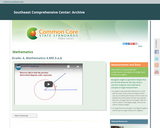
The Common Core State Standards (CCSS) videos are designed to support states, schools, and teachers in the implementation of selected math standards. Each video is an audiovisual resource that focuses on one or more specific standards through examples and illustrations geared to enhancing understanding. The intent of each content-focused video is to clarify the meaning of the individual standard rather than to be a guide on how to teach each standard, although the examples can be adapted for instructional use.

Students will learn how to design 3-Dimensional objects using Tinkercad.

Students will use Lego WeDo kits or any other building kit such as k’nex, or geomags or craft materials to build the alligator or alligator mouth and then use a protractor to measure the angle of the mouth opening. Connecting math and the everyday world through the use of building an object to incorporate angle measurements. As an extension of learning students will then attempt to vary the measurement by adjusting the bands or speed of the motor if using wedo or programmable build kits or non-robotic version by adjusting the hinge of the mouth. Students should attempt to alter the build in efforts to change the angle.

In this online interactive, students solve problems estimating degree of measurement for the angle shown.

This practice worksheet helps students to develop an understanding of angles and angle measurement through the practice of solving addition and subtraction problems to find unknown angles on a diagram in real-world and mathematical problems. Answers can be found here: https://corbettmathsprimary.com/wp-content/uploads/2018/08/angle-facts-answers.pdf
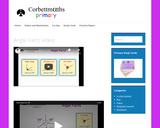
This instructional video helps students to develop an understanding of angles and angle measurement. Including solve addition and subtraction problems to find unknown angles on a diagram in real-world and mathematical problems.
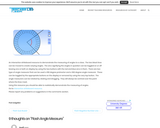
This online interactive allows teachers to create angles of various sizes and demonstrate how to measure them using either a 180 degree or 360 degree protractor. The protractors are automatically centered on the vertex of the angle.

This short video and interactive assessment activity is designed to give fourth graders an overview of measurement of angles.

For this assessment task, students explain that the angle measurement is the sum of its decomposed angles. Students write an equation with an unknown measurement and solve word problems involving unknown angles.

In this lesson, students make their own protractor and use it to identify and measure various angles.

Students roll a die and divide circles into the number of equal sections shown on the die. They explain how measuring the first angle helped them to find the measurement of other angles in each circles.

In this lesson plan, students will use protractors to measure angles and draw angles of a specific measure. Students will also use an angle wheel as a way to measure the degrees of an angle. Finally students will study artistic prints and find an angle within the picture to measure and then discuss why they used the measure in the artwork.
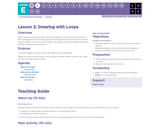
Watch student faces light up as they make their own gorgeous designs using a small number of blocks and digital stickers! This lesson builds on the understanding of loops from previous lessons and gives students a chance to be truly creative. This activity is fantastic for producing artifacts for portfolios or parent/teacher conferences.

Students estimate the angle of rotation needed to fire a cannon at a target. They have 10 balls to hit as many targets as possible.
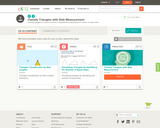
This short video and interactive assessment activity is designed to teach fourth graders about classifying triangles based on equal sides.